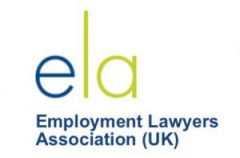SERVICES
FOR BUSINESS
BUSINESS EMPLOYMENT SOLICITORS IN READING & HENLEY

Settlement Agreements
A Settlement Agreement (previously known as a Compromise Agreement) is a voluntary legally-binding written contract, where an employer and employee terminate employment on agreed terms.
Employers may wish to offer a Settlement Agreement to employees they are making redundant or to avoid going to an Employment Tribunal, as it is a much quicker and simpler procedure. Should you need to terminate an employee’s employment, using a Settlement Agreement enables you to offer an employee a sum of money to facilitate a swifter termination of their employment, and help protect your business against future claims as the employee will be unable to make a claim about any type of claim which is listed in the agreement, such as unfair dismissal.
In essence, a Settlement Agreement financially compensates the employee whilst limiting the employer’s liability so that a line is drawn under the end of the employment relationship with a “clean break” being achieved. Because of this, the law states that employees should seek independent legal advice to have any Settlement Agreement offered to them reviewed and, if appropriate, negotiating the terms. This legal advice is normally paid for by the employer in terms of a financial contribution.
Redundancy
Unfortunately, employers may find that they need to close a work place, restructure their business or reduce overheads as a result of a downturn in the economy. If that is the case, they may need to make some of their employees redundant and to do so they need to carefully follow set redundancy procedures.
Making an employee redundant isn’t the same thing as dismissing them for poor performance or a disciplinary matter, and can only happen when an employee’s role within a company ceases to exist. It is the responsibility of the employer to make ensure their employees are treated fairly, which ranges from exploring possible alternative employment to ensuring they receive the full redundancy package they are entitled to.
Before starting the redundancy process, an employer has to be completely sure there are no alternatives to solve the issue causing the potential redundancy, including changes to their employee’s terms and conditions that, for example, reduce working hours or pay.
The redundancy procedure is a legal requirement for all businesses, and employers need to follow it carefully. This includes:
- being clear on the reasons for redundancy
- outlining how it was determined which roles are at risk
- fair selection
- the criteria used to ‘score’ staff against
- rounds of employee consultation
- written notification and dismissal notices
- the right to appeal
Even if a redundancy situation is genuine, failure to follow the correct procedure can result in a finding of unfair dismissal at an Employment Tribunal. While the right to claim unfair dismissal only arises after two complete years of service, selection for a discriminatory reason can also result in a claim from the beginning of the employment relationship.
There are some situations where an employer may wish to offer a Settlement Agreement– a voluntary legally binding contract that can be used to end an employment relationship on agreed terms between the employer and the employee. A much quicker procedure that the formal redundancy route, Settlement Agreements also ensure that if an employee is dismissed, they will be unable to make an employment tribunal claim about any type of claim which is listed in the agreement such as unfair dismissal.
Unfair Dismissal & Constructive Dismissal
If an employee has worked continuously for an employer at least two years, they cannot be dismissed without a fair reason, otherwise the termination of the employment may be viewed as an unfair dismissal. There are five fair reasons for dismissing an employee:
- conduct/misconduct – their behaviour amounts to misconduct, serious or gross misconduct at or outside of work
- capability/performance – their health or abilities makes them incapable or unwilling to do a job to a required standard
- redundancy – their role ceases to exist and there is no alternative employment
- breach of statute – where their continued employment would contravene a statute e.g. if a lorry driver lost their driving licence
- some other substantial reason – this will depend on the facts of each case but an example might be a serious personality clash with another employee.
An employee only has three months from the date their employment was terminated, to claim unfair dismissal.
An employee may bring an unfair dismissal claim against you if you have dismissed them without fair reason or did not follow your company’s formal disciplinary process. There are several things to check to see if your employee has grounds for an unfair dismissal case, including the nature of their employment. Generally speaking, an unfair dismissal case can only be brought against an employer if the employee:
- is contractually considered to be an employee (as opposed to a contractor, for example)
- has been an employee for at least two years
- there is a legal reason to consider their dismissal unfair
If an employee has resigned from a job because they felt unable to work due to an employer’s or fellow employees’ actions, they may be able to make a claim against their employer for constructive unfair dismissal, as long as they have worked for their employer for least two years.
Constructive dismissal must amount to a fundamental breach of contract, it is not sufficient that the employee feels the employers has acted ‘unreasonably’, which might be one serious incident or a series of incidents when taken together are serious.
Claims for constructive can arise for a number of reasons, for example, the employee:
- has not been paid
- has been demoted without reason
- the employer has made fundamental changes to your working conditions
- the employee feels unsafe at work
- the employee has been subjected to victimisation, bullying or harassment in the workplace
- the trust and confidence in the employment relationship has fundamentally broken down.
Dismissals & Disciplinaries
Your disciplinary procedure should be in writing and made easily available to all staff e.g. in a staff handbook. Some employers also put their disciplinary procedures in their employee’s employment contracts, which if not followed could result in a claim for breach of contract. Your disciplinary procedure should clearly say what performance and behaviour might lead to disciplinary action and what action an employer might take. It should also include the name of someone an employee can speak to if they do not agree with the employer’s disciplinary decision.
If you discipline an employee you need to follow a prescribed process:
- a letter setting out the issue
- a meeting to discuss the issue
- a disciplinary decision
- a chance to appeal this decision.
- who the employee should contact about a grievance
- how to contact this person
- if the problem can’t be resolved informally, there will be a meeting with the employee, called a grievance hearing
- set out time limits for each stage of the grievance process
- identify who to contact if the normal contact person is involved in the grievance
- explain how to appeal a grievance decision
- state that employees can be accompanied in any meetings by a colleague or union representative
- outline what happens if a grievance is raised during disciplinary action
Contracts
An employer may wish to alter an employee’s existing contractual terms and conditions, due to a business reorganisation or economic reason, for example, the financial impact of the Coronavirus pandemic. Changes an employer may wish to make to the terms and conditions of a contract can include pay cuts, changing hours or place of work, job duties and entitlement to certain benefits.
Contractual terms in an employment contract cannot be changed without an employee’s agreement, unless this is permitted by the contract itself with a variation clause. Even if such a clause exists, it may not be effective unless carefully worded and a fair procedure followed – any ambiguity will likely be construed in the employees’ favour as Courts and Employment Tribunals often view such clauses as undermining trust and confidence considerations.
If no agreement can be reached, an employer can terminate an employee’s existing contract and offer continued employment on new terms. However, this constitutes a dismissal in law and the employee will be able to bring unfair dismissal claims if they have 2 years’ service. Whether the dismissal is fair depends on why the changes are needed and if the employers can establish that they had a substantial reason. However, a tribunal would always expect there to have been consultation and an attempt to reach agreement first.
If you plan to change the contracts 20 or more employees and/or considering dismissing and re-employing these staff on new terms, collective redundancy regulations will apply.
Discrimination
Discrimination at work can be direct or indirect. Under the law there are 9 protected characteristics and discrimination occurs when an employee is treated unfairly because of:
- age
- disability
- gender reassignment
- marriage or civil partnership
- pregnancy and maternity
- race or colour
- religion or belief
- sex
- sexual orientation
The Equality Act 2010 sets out four main types of discrimination:
- Direct Discrimination: This is discrimination against an employee because of one or more of the protected characteristics named above.
- Indirect Discrimination: This is where a policy or practice in the workplace causes a considerably smaller proportion of those with a protected characteristic to be unable to comply with the policy or practice than those who do not have the protected characteristic or who have a different protected characteristic.
- Victimisation: This is where an employee is treated less favourably because they have or might complain about discrimination or support someone else’s complaint about discrimination.
- Harassment: This is when an employee is subjected to unwanted verbal, non-verbal or physical conduct related to a protected characteristic which violates their dignity or creates an intimidating, hostile, degrading, humiliating or offensive environment. It can include behaviour that individuals find offensive even if it’s not directed at them, and even if they do not have the relevant protected characteristic themselves.
Flexible Working
The government originally introduced the right to apply for flexible working in April 2003 to parents of children under the age of five. This right was extended over time and the current position is that in addition to parents with young children, employees are now entitled to seek the right to work on a flexible basis where they have disabled dependants under the age of 17 or 18, and also if the employee has caring responsibilities for a partner or family member.
Under current law, if an employee wants to switch from full-time to part-time hours and they have been employed for 26 weeks, they have the right to make that request of their employer. The employer does not have to agree to the request, but they must consider it in a reasonable manner, follow a specific procedure and are be obliged to consider the request in accordance with statutory timescales.
The Employment Relations (Flexible Working) Bill reached Royal Assent on 20 July 2023 and is expected to come into force in 2024 – see our article for more details on what this will mean for employers and employees and flexible working. The Act will require employers to consider and discuss any flexible working requests made by their employees relating to working hours or patterns including part-time, term-time, flexi-time, compressed hours, adjusting start and finish times, or where someone works, whether that be from home or a satellite office shortening their commute.
TUPE
The new and old employers have an obligation to inform and consult with the employees regarding the transfer of their employment and any implications for them. Failure to comply can lead to each employee being awarded up to 13 weeks’ pay in addition to any compensation for unfair dismissal.
The outgoing employer also needs to provide the new employer with prescribed information about the transferring employees. Failure to provide that information correctly at least 14 days before the transfer can lead to a claim from the new employer and a tribunal award of at least £500 in relation to each employee affected.








